pH Plus
pH Plus
pH Plus (also known as pH Increaser) is a chemical compound used to raise the pH level of water, commonly in swimming pools, hot tubs, and spas. Maintaining the correct pH balance is crucial for water safety, bather comfort, and protecting equipment from corrosion or scaling.
pH Plus (also known as pH Increaser) is a water treatment chemical specifically designed to raise the pH level in swimming pools, hot tubs, spas, and other recreational water systems. Maintaining the correct pH balance is essential for ensuring water quality, swimmer comfort, and the longevity of pool and spa equipment.
Chemically, pH Plus typically consists of sodium carbonate (Na₂CO₃), commonly known as soda ash, or sodium bicarbonate (NaHCO₃), also called baking soda, depending on the specific formulation and the desired rate of pH increase. These alkaline compounds work by neutralizing excess acidity in the water, thereby raising the pH level and moving it toward the ideal range—usually between 7.2 and 7.6 for pools and spas.
When the pH level of pool or spa water drops below the recommended range (becoming too acidic), several problems can arise:
-
Corrosion of metal components, such as ladders, pumps, and heaters
-
Etching or deterioration of pool surfaces, especially plaster or tile
-
Increased chlorine consumption, as low pH reduces the effectiveness of chlorine as a sanitizer
-
Irritation to swimmers, including red eyes, dry skin, and burning sensations
-
Unbalanced water chemistry, which can affect the performance of other water treatment chemicals
Adding pH Plus restores the water to a more neutral and stable pH, creating a more comfortable and safe swimming environment. It also helps protect pool equipment and surfaces from premature wear and tear caused by corrosive water.
Usage and Application:
pH Plus is generally sold in granular or powdered form and is easy to apply. It is typically pre-dissolved in a bucket of water and then evenly distributed around the perimeter of the pool or directly into the spa with the circulation system running. After application, the water should be retested after a few hours to ensure the pH has reached the desired level. Dosage instructions vary depending on the volume of water and the starting pH level, so it’s important to follow the manufacturer’s guidelines.
Safety Considerations:
Although pH Plus is a relatively safe chemical to handle, users should wear gloves and eye protection during application to avoid contact with skin or eyes. It should be stored in a cool, dry place away from moisture and incompatible substances. Always keep chemicals out of reach of children and pets.
Conclusion:
pH Plus plays a vital role in regular pool and spa maintenance. By correcting acidic water conditions and restoring pH balance, it ensures a safe, comfortable, and efficient aquatic environment. Regular monitoring and adjustment of pH using pH Plus or other water balancing chemicals is key to preserving water quality and extending the life of your pool or spa system.
pH Plus (also known as pH Increaser) is a water treatment chemical specifically designed to raise the pH level in swimming pools, hot tubs, spas, and other recreational water systems. Maintaining the correct pH balance is essential for ensuring water quality, swimmer comfort, and the longevity of pool and spa equipment.
Chemically, pH Plus typically consists of sodium carbonate (Na₂CO₃), commonly known as soda ash, or sodium bicarbonate (NaHCO₃), also called baking soda, depending on the specific formulation and the desired rate of pH increase. These alkaline compounds work by neutralizing excess acidity in the water, thereby raising the pH level and moving it toward the ideal range—usually between 7.2 and 7.6 for pools and spas.
When the pH level of pool or spa water drops below the recommended range (becoming too acidic), several problems can arise:
-
Corrosion of metal components, such as ladders, pumps, and heaters
-
Etching or deterioration of pool surfaces, especially plaster or tile
-
Increased chlorine consumption, as low pH reduces the effectiveness of chlorine as a sanitizer
-
Irritation to swimmers, including red eyes, dry skin, and burning sensations
-
Unbalanced water chemistry, which can affect the performance of other water treatment chemicals
Adding pH Plus restores the water to a more neutral and stable pH, creating a more comfortable and safe swimming environment. It also helps protect pool equipment and surfaces from premature wear and tear caused by corrosive water.
Usage and Application:
pH Plus is generally sold in granular or powdered form and is easy to apply. It is typically pre-dissolved in a bucket of water and then evenly distributed around the perimeter of the pool or directly into the spa with the circulation system running. After application, the water should be retested after a few hours to ensure the pH has reached the desired level. Dosage instructions vary depending on the volume of water and the starting pH level, so it’s important to follow the manufacturer’s guidelines.
Safety Considerations:
Although pH Plus is a relatively safe chemical to handle, users should wear gloves and eye protection during application to avoid contact with skin or eyes. It should be stored in a cool, dry place away from moisture and incompatible substances. Always keep chemicals out of reach of children and pets.
Conclusion:
pH Plus plays a vital role in regular pool and spa maintenance. By correcting acidic water conditions and restoring pH balance, it ensures a safe, comfortable, and efficient aquatic environment. Regular monitoring and adjustment of pH using pH Plus or other water balancing chemicals is key to preserving water quality and extending the life of your pool or spa system.

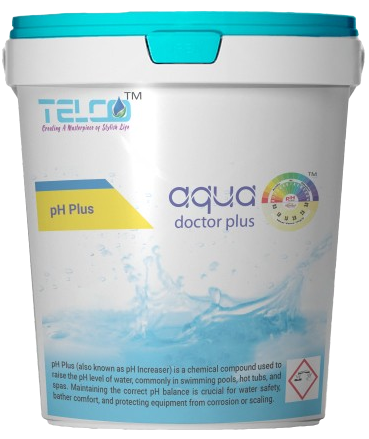
![TRICHLOROISOCYANURIC ACID 90 [TCCA 90] POWDER](https://telco.com.bd/wp-content/uploads/2025/10/T-C-C-A-90-TRICHLOROISOCYANURIC-ACID-90-POWDER-25kg-01-300x300.jpg)
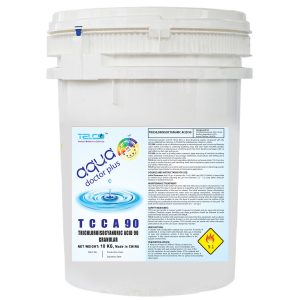
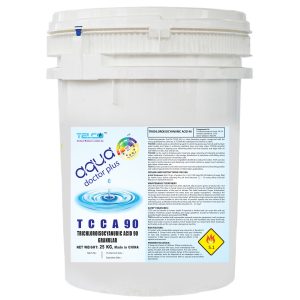

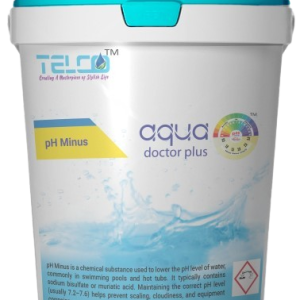
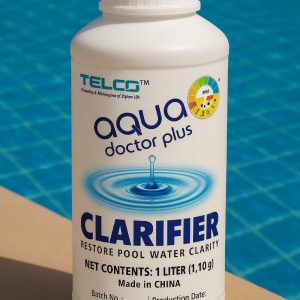
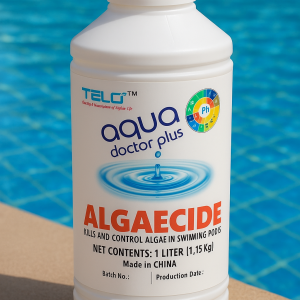


Reviews
There are no reviews yet.